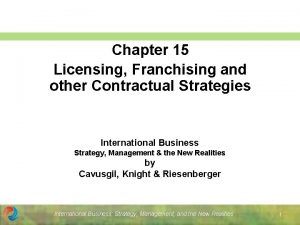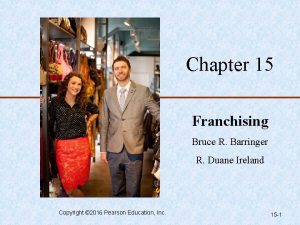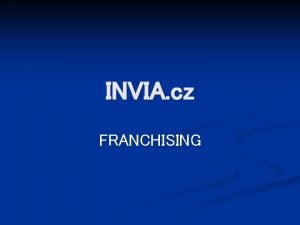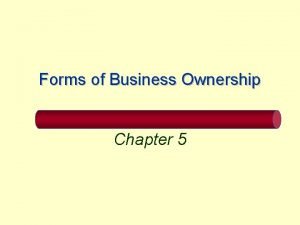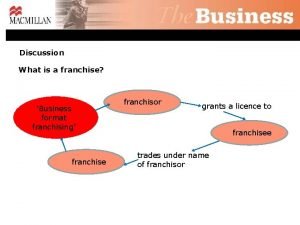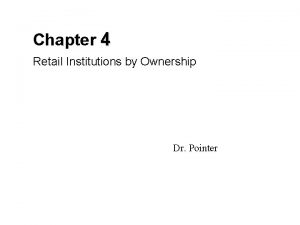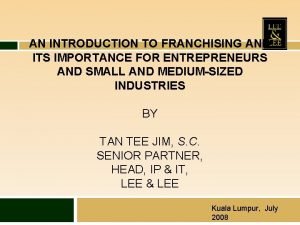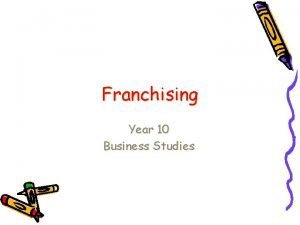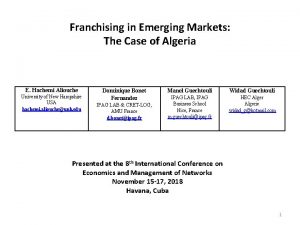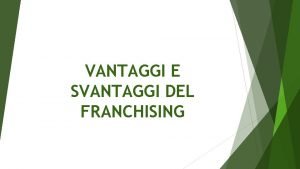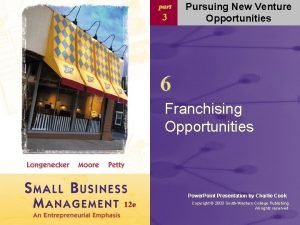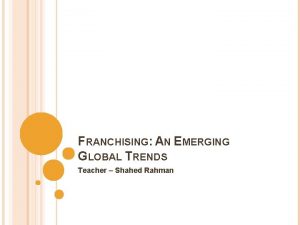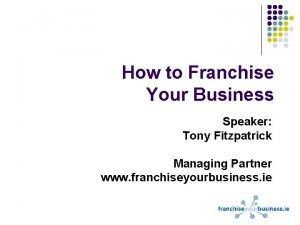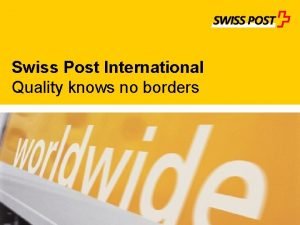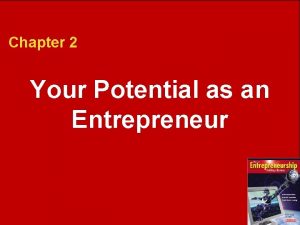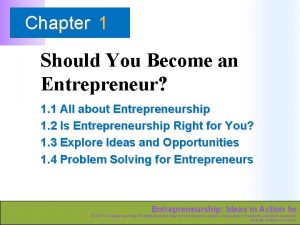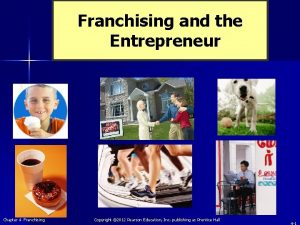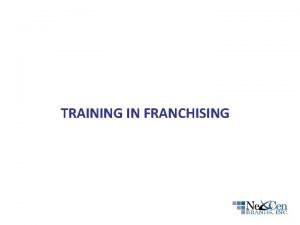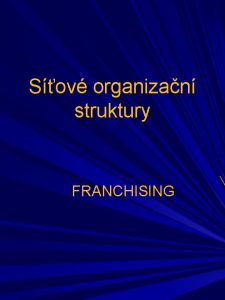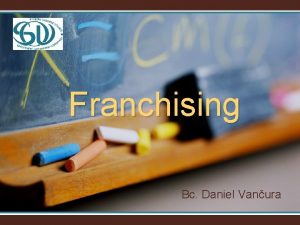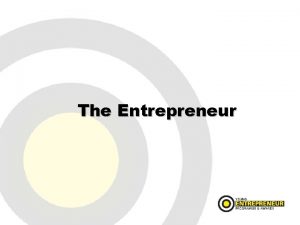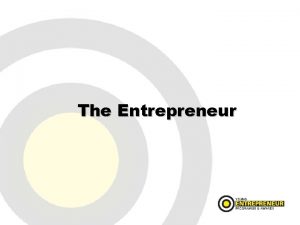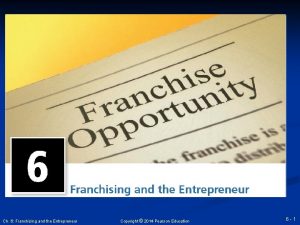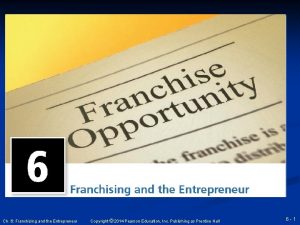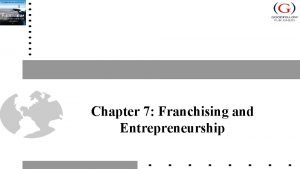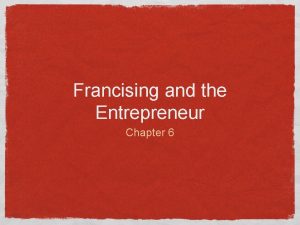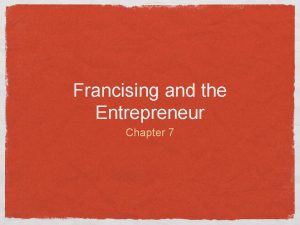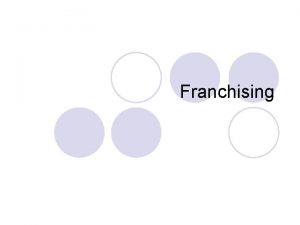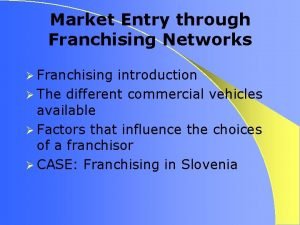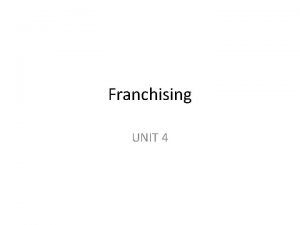Franchising and the Entrepreneur Chapter 4 Franchising Copyright






















- Slides: 22

Franchising and the Entrepreneur Chapter 4 Franchising Copyright © 2012 Pearson Education, Inc. publishing as Prentice Hall 4 -1

The Franchising Boom!!! Shoppers can now buy virtually every product or service imaginable through franchises n More than 854, 000 franchise outlets in the United States n Ø employ almost 9. 6 million people Ø generate $835 billion in annual output – an amount that is 5. 8% of the country’s GDP Chapter 4 Franchising Copyright © 2012 Pearson Education, Inc. publishing as Prentice Hall 4 -2

Global Franchising n n n Chapter 4 Franchising 52% of U. S. franchisers have international outlets Of the U. S. franchisers who operate globally, 30% of their total outlets are located in other countries Hot markets: Europe and Pacific Rim Copyright © 2012 Pearson Education, Inc. publishing as Prentice Hall 4 -3

Franchising n Franchising – semi-independent business owners pay fees and royalties to a parent company in exchange for the right to sell its products and services under the franchiser’s trade name and often to use its business format and system Chapter 4 Franchising Copyright © 2012 Pearson Education, Inc. publishing as Prentice Hall 4 -4

Figure 4. 1 The Franchising Relationship Element The Franchiser The Franchisee Site selection Oversees and approves; may choose site Chooses site with franchiser’s approval Design Provides prototype design Pays for and implements design Employees Makes general recommendations and training suggestions Hires, manages, and fires employees Products and services Determines product or service line Modifies only with franchiser’s approval Prices Can only recommend prices Sets final prices Purchasing Establishes quality standards; provides list of approved suppliers; may require franchisees to purchase from the franchisor Must meet quality standards; must purchase only from approved suppliers; must purchase from supplier if required Advertising Develops and coordinates national ad campaign; may require minimum level of spending on local advertising Pays for national ad campaign; complies with local advertising requirements; gets franchisor approval on local ads Quality control Sets quality standards and enforces them with inspections; trains franchisees Maintains quality standards; trains employees to implement quality systems Support Provides support through an established business system Operates business on a day-to-day basis with franchiser’s support Source: Adapted from Economic Impact of Franchised Businesses: A Study for the International Franchise Association, National Economic Consulting Practice of Price. Waterhouse. Coopers, (IFA Educational Foundation, New York: 2004), pp. 3, 5.

Types of Franchising n Tradename n Product distribution Pure (Business format) n Chapter 4 Franchising Copyright © 2012 Pearson Education, Inc. publishing as Prentice Hall 4 -6

Why Buy a Franchise? n Franchisees are buying the franchiser’s n “Going into business for yourself but not by yourself” Franchisees get a proven business system and avoid having to learn by trial-and-error Before buying, ask: “What can a franchise do for me that I cannot do for myself? ” n n experience Chapter 4 Franchising Copyright © 2012 Pearson Education, Inc. publishing as Prentice Hall 4 -7

Benefits of Franchising Business system n Management training and support n Brand name appeal n Ø “Cloning” Standardized quality of goods and services n National advertising program n Chapter 4 Franchising Copyright © 2012 Pearson Education, Inc. publishing as Prentice Hall 4 -8

Benefits of Franchising n Financial assistance Ø Franchise Registry Proven products and business formats n Centralized buying power n Site selection and territorial protection n Greater chance for success n Chapter 4 Franchising Copyright © 2012 Pearson Education, Inc. publishing as Prentice Hall 4 -9

Greater Chance for Success Study: After 5 years, 90% of franchises are still in business compared to 40% of independent businesses n The difference? n Ø Services, assistance, and guidance that experienced franchisers offer their franchisees Chapter 4 Franchising Copyright © 2012 Pearson Education, Inc. publishing as Prentice Hall 4 -10

Source: National Federation of Independent Businesses and U. S. Department of Commerce. Chapter 4 Franchising Copyright © 2012 Pearson Education, Inc. publishing as Prentice Hall 4 -11

What Franchisers Want in Franchisees 1. 2. 3. 4. 5. 6. Chapter 4 Franchising People skills 94% Ability to be coached 87% General business skills 86% Access to capital 84% Entrepreneurial mindset 76% Specific industry skills 29% Copyright © 2012 Pearson Education, Inc. publishing as Prentice Hall 4 -12

Drawbacks of Franchising n Franchise fees and revenue sharing Ø Start-up costs range from $2, 000 to $250, 000 Ø Royalty: 1% to 11% of sales Strict adherence to standardized operations n Restrictions on purchasing n Chapter 4 Franchising Copyright © 2012 Pearson Education, Inc. publishing as Prentice Hall 4 -13

Drawbacks of Franchising Limited product line n Unsatisfactory training programs n Market saturation n Less freedom n Ø “Happy Chapter 4 Franchising prisoners” Copyright © 2012 Pearson Education, Inc. publishing as Prentice Hall 4 -14

Ten Myths of Franchising 1. 2. 3. Chapter 4 Franchising is the safest way to go into business because franchises never fail I’ll be able to open my franchise for less money than the franchiser estimates The bigger the franchise organization, the more successful I’ll be Copyright © 2012 Pearson Education, Inc. publishing as Prentice Hall 4 -15

Ten Myths of Franchising 4. 5. 6. Chapter 4 Franchising I’ll use 80 percent of the franchiser’s business system, but I’ll improve upon it by substituting my experience and know-how All franchises are the same I don’t have to be a “hands-on” manager. I can be an absentee owner and be very successful Copyright © 2012 Pearson Education, Inc. publishing as Prentice Hall 4 -16

Ten Myths of Franchising 7. 8. 9. 10. Chapter 4 Franchising Anyone can be a satisfied, successful franchise owner Franchising is the cheapest way to get into business for yourself The franchiser will solve my business problems for me; after all, that’s why I pay an ongoing royalty Once I open my franchise, I’ll be able to run things the way I want to Copyright © 2012 Pearson Education, Inc. publishing as Prentice Hall 4 -17

How to Buy a Franchise n n Chapter 4 Franchising Preparation, common sense, and patience are vital ingredients in choosing the right franchise Evaluate yourself – What do you like and dislike? Research the market Consider your franchise options Get a copy of the franchiser’s Uniform Franchise Disclosure Document (UFDD) and study it Copyright © 2012 Pearson Education, Inc. publishing as Prentice Hall 4 -18

What Should You Look For? A unique concept or marketing approach n Profitability n A registered trademark n Chapter 4 Franchising Copyright © 2012 Pearson Education, Inc. publishing as Prentice Hall 4 -19

What Should You Look For? (Continued) A business system that works n A solid training program n Affordability n A positive relationship with franchisees n Chapter 4 Franchising Copyright © 2012 Pearson Education, Inc. publishing as Prentice Hall 4 -20

How to Buy a Franchise (Continued) Talk to existing franchisees n Ask the franchiser some tough questions n Make your choice n Chapter 4 Franchising Copyright © 2012 Pearson Education, Inc. publishing as Prentice Hall 4 -21

Table 4. 4 Advantages and Disadvantages of Buying a New vs. an Established Franchise New Franchise Established Franchise Pros Cons Can be new and exciting Business concept can be fresh and different in the market Possibility of getting lower fees as a “pioneer” of the concept Potential for a high return on investment Business is not tested or established in the market Unknown brand trademark Possibility that the concept is a fad with no staying power Franchiser may lack the experience to deliver valuable services to franchisees Business concept likely is wellknown to consumers and market for the products or services is already established Franchiser has experience in delivering services to franchisees Franchiser has had time to work the “bugs” out of the business system High franchise fees and costs that often are non-negotiable Concept may be on the wane in the market Franchiser’s brand trademark may remind customers of an outdated concept Franchiser’s “trade dress” may be in need of updating and redesigning Source: Based on Andrew A. Caffey, “Age Issues, ” Entrepreneur, January 2002. p. 118. Chapter 4 Franchising Copyright © 2012 Pearson Education, Inc. Publishing as Prentice Hall 4 -27
 Licensing franchising and other contractual strategies
Licensing franchising and other contractual strategies Advantages and disadvantages of franchising
Advantages and disadvantages of franchising Franchising co to je
Franchising co to je Franchising introduction
Franchising introduction Advantages of franchising
Advantages of franchising Franchise format
Franchise format Wholesaler-retailer franchise
Wholesaler-retailer franchise Introduction to franchising pdf
Introduction to franchising pdf Bbc bitesize franchising
Bbc bitesize franchising Objectives of franchising
Objectives of franchising Franchising in algeria
Franchising in algeria Svantaggi franchising
Svantaggi franchising Starting a busness
Starting a busness Franchising
Franchising Franchising
Franchising Franchising meaning
Franchising meaning Swiss post direct
Swiss post direct Franchising
Franchising Podzial spolek
Podzial spolek Chapter 2 your potential as an entrepreneur
Chapter 2 your potential as an entrepreneur Chapter 1 should you become an entrepreneur
Chapter 1 should you become an entrepreneur Nature and importance of entrepreneur
Nature and importance of entrepreneur Chapter 1 should you become an entrepreneur
Chapter 1 should you become an entrepreneur
